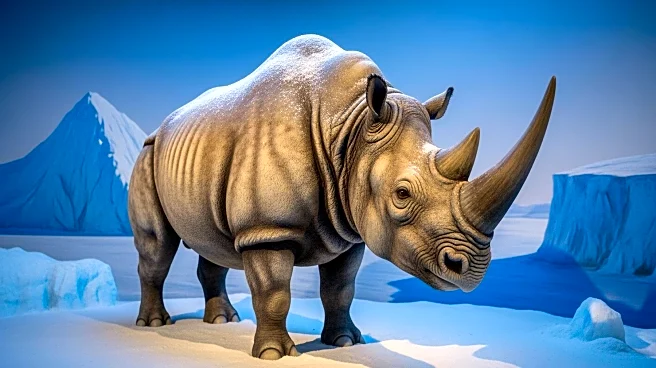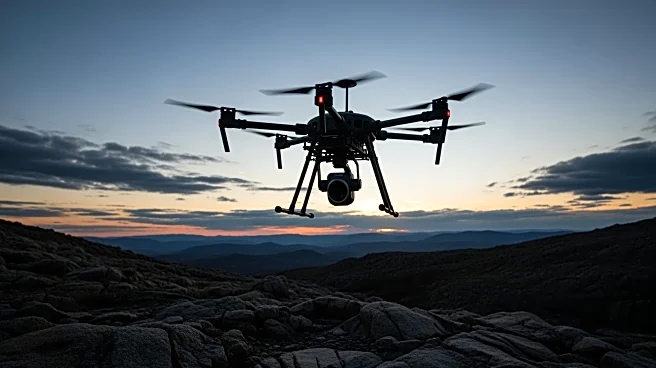What's Happening?
Scientists from the Canadian Museum of Nature have announced the discovery of a new extinct rhinoceros species, Epiaceratherium itjilik, from the Canadian High Arctic. The fossil, found in the Haughton Crater on Devon Island, Nunavut, is the most northerly
rhino species known. This species lived approximately 23 million years ago during the Early Miocene and is closely related to European rhinos from millions of years earlier. The discovery was published in the journal Nature Ecology and Evolution. The research team, led by Dr. Danielle Fraser, has provided new insights into the evolutionary history of rhinoceroses, suggesting that this Arctic species migrated to North America via a land bridge, indicating a later dispersal of terrestrial mammals than previously thought.
Why It's Important?
The discovery of Epiaceratherium itjilik adds a significant piece to the puzzle of rhinoceros evolution, highlighting the role of the Arctic in the dispersal and diversification of these mammals. This finding challenges previous assumptions about the timing and routes of rhino migration, suggesting that the North Atlantic Land Bridge was used for dispersal much later than previously believed. The research underscores the importance of the Arctic in understanding mammalian evolution and biogeography, offering new perspectives on how species adapted to different environments over millions of years. This could have broader implications for studying climate change and its impact on species migration and adaptation.
What's Next?
The research team plans to continue exploring the evolutionary and biogeographic history of rhinocerotids, using the new data from Epiaceratherium itjilik to refine models of species dispersal. Further studies may focus on extracting and analyzing ancient proteins from the fossil, which could provide additional insights into the evolutionary relationships and adaptations of ancient rhinos. The findings may also prompt further paleontological expeditions in the Arctic to uncover more fossils that could shed light on the region's role in mammalian evolution.
Beyond the Headlines
The discovery of Epiaceratherium itjilik not only enriches the scientific understanding of rhinoceros evolution but also highlights the potential for the Arctic to reveal new species and evolutionary pathways. This underscores the importance of preserving fossil sites and supporting paleontological research in remote regions. The study also emphasizes the collaborative nature of scientific discovery, involving contributions from multiple researchers and institutions over several decades.














